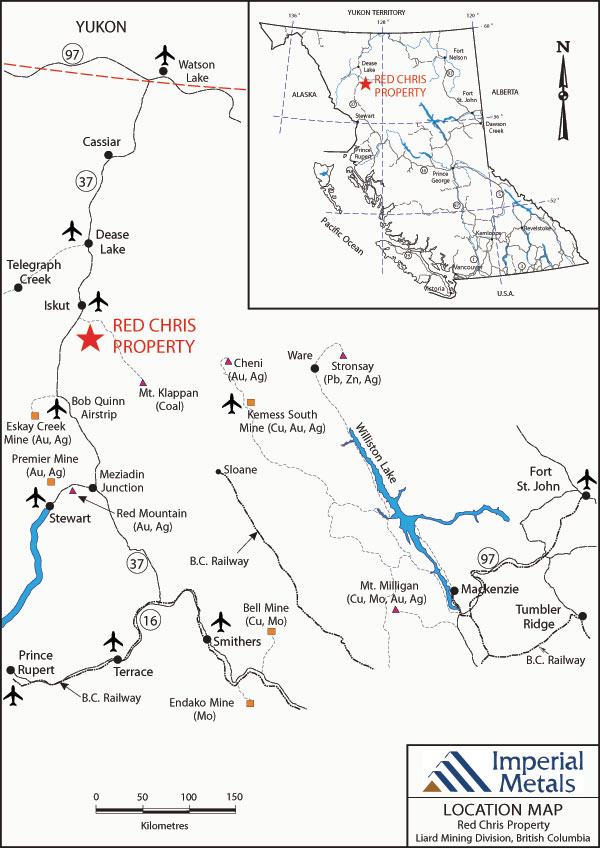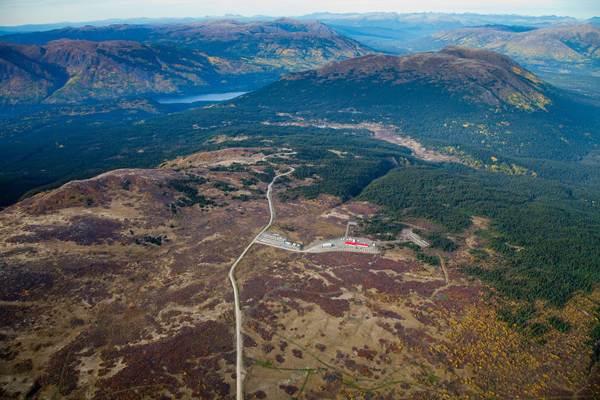More work is required before anyone knows how an estimated 300-million tonnes of tailings from the proposed Red Chris mine will eventually affect water in the upper Stikine watershed of northwest B.C., concludes a confidential industry-funded review acquired by The Tyee.
The report, paid for by mine owner Imperial Metals at the urging of the Tahltan Nation, recommends a comprehensive field investigation including additional drilling, groundwater collection and monitoring wells be undertaken as a way of addressing existing information gaps.
"...Studies completed to date are not sufficiently detailed to fully assess/monitor potential environmental impacts due to seepage from the tailings storage facility on the downstream aquatic environment," concludes the study presented early this year to a panel of First Nations, government and industry overseeing the permitting of the proposed mine, which is scheduled to begin operations by May 2014.
The report comes years after Red Chris received environmental approval from B.C. and the federal government -- the latter the subject of a drawn-out legal battle with environmentalists that went all the way to the Supreme Court of Canada.
Some see the report as a wake-up call for the British Columbia government -- in particular its practice of approving environmental assessments and other permits for large industrial projects before important details of environmental safety are well understood.
"It makes you wonder how this project ever got through B.C.'s environmental assessment process," says environmental consultant and former geologist Tony Pearse, who has participated in over two dozen environmental assessments of mining projects in western Canada.
"Will this thing hold water? That's a critical question to answer before you give a project like this environmental approval."
When do studies need to be done?
Tailings generated by the Red Chris mine -- a collection of fine crushed rock, water and chemicals from the mine's mill -- will eventually be deposited into a Y-shaped valley bottom, contained at each end by large dams. The tailings storage facility as planned straddles the headwaters of three local watersheds, and is downstream of both the Klappan river and a chain of large lakes draining into the Iskut River. Containing potentially acid-generating rock, much of the tailings will need to be submerged in water for "perpetuity."
A B.C. Ministry of Energy and Mines spokesman confirmed the report recommendations will be "fully implemented" -- including work around the south dam to ensure wells drilled to intercept flows of potentially-contaminated groundwater will function as planned.
"We did this third party review as an act of good faith and good community relations, but we did not feel it was necessary from a scientific perspective," says Steve Robertson, exploration manager for Vancouver's Imperial Metals. "What that report said was, 'You guys aren't done yet, you have more work to do,' just as we knew we did."

Robertson says it is common practice in B.C. for companies to pass through environmental assessment without having all their research completed -- in this case, without a thorough understanding of how groundwater moves (and at what speed) beneath the proposed tailings dump.
Pearse sees it differently. The review identified a "host of critical unknowns" about the groundwater conditions below the proposed impoundment, he says, and exposed numerous non-conservative assumptions used in the company's modelling. "These are strategic issues that the EA process should have resolved. They should not be left to the permitting process to deal with."
The BC Environmental Assessment Office did not respond to The Tyee's request for comment by deadline.
Study author Christopher Wels, a private consultant, would not comment on the timing of the report relative to the EA process, but said he expects the company will be able to fill the necessary information gaps in advance of going into production.
A race against time
Red Chris still requires more permits and approvals before it can use the valley to store tailings, including a regulatory amendment from Ottawa to destroy a small lake and the headwaters of a fish-bearing creek. The company will compensate the destruction by creating/enhancing fish habitat elsewhere. At least one permit is still needed from the province for the tailings facility to operate as well. Robertson is adamant the study will in no way delay any permitting Red Chris needs to hit its May 2014 deadline.
Shannon McPhail, executive director of the Skeena Watershed Conservation Coalition, a Hazelton-based environmental group, says delays have already occurred. A public consultation scheduled for Dec. 2012 to discuss the outstanding federal approval for the tailings facility was cancelled while the company pursued further consultations with the Tahltan. The federal Ministry of Environment confirmed the meeting will be rescheduled, but did not name a date.
Time is of the essence for Red Chris. Imperial Metals is currently tasked with raising $500 million to complete construction -- up nearly 15 per cent from recent estimates, in the worst financing climate for metal mines since the crash of 2008. This amid an ongoing slide in both copper and gold prices.
In April 2013, Robertson told The Tyee Imperial Metals expected to have its Red Chris financing completed by June; on June 27 he confirmed the desired long-term debt financing had yet to be secured.
In the meantime, Red Chris construction is being funded in part by $150 million in loans facilitated by oil sands mogul and Calgary Flames co-owner N. Murray Edwards. Listed as the 19th richest Canadian by Forbes' most recent global billionaires list, Edwards has a considerable interest in seeing Red Chris move forward -- he owns nearly 40 per cent of Imperial Metals stock.
Permits and trade-offs
In May 2012, the B.C. government awarded a provincial Mines Act permit for Red Chris mine -- which requires detailed designs and plans for all mine components from construction all the way to reclamation.
The same day Tahltan Central Council President Annita McPhee, who represents about 5,000 Tahltan, lashed out against this decision. The permit, she said, was premature because not enough was yet known about how Red Chris would impact the "Sacred Headwaters" -- the region where the headwaters of the Nass, Stikine and Skeena mingle close together.
Today there are currently at least 13 Tahltan heavy equipment operators operating Tahltan-owned rock trucks and excavators at the Red Chris construction site, according to a June 2013 Tahltan newsletter. The same publication quotes Bill Adsit, president and CEO of the Tahltan Nation Development Corporation, the Tahltan-owned development company, as saying the Tahltan are one of the few First Nations in Canada with nearly 100 per cent employment. This in a region that is expecting an avalanche of mining and hydro projects worth an estimated $11 billion, much of it concentrated in Tahltan territory.
More than a year later after the Mines Act permit was awarded, Imperial Metals has yet to complete an impact benefit agreement with the Tahltan for Red Chris. McPhee refused repeated interview requests, but told The Tyee in April 2013 that the general Tahltan sentiment toward Red Chris was mixed.
"Our people have concerns about [Red Chris], and there are also people that are OK with it because they are working there," she said. ![]()
Read more: Labour + Industry, BC Politics, Environment
















Tyee Commenting Guidelines
Comments that violate guidelines risk being deleted, and violations may result in a temporary or permanent user ban. Maintain the spirit of good conversation to stay in the discussion.
*Please note The Tyee is not a forum for spreading misinformation about COVID-19, denying its existence or minimizing its risk to public health.
Do:
Do not: